FM18 4-2-3-1 Narrow Formation: A Simple Passing Game
Hey guys, it’s your tactic creator again. Here in this write-up, I’m going to share a simple but powerful passing style of play I created when I was managing Newcastle United in FM18. This tactic is based on the 4-2-3-1 Narrow formation. At first, after seeing the kind of players Newcastle have, I started looking for something technical in style because of the minimum number of physical players in the squad. Also, I didn’t want to go for high possessive game like tiki-taka. I wanted something simple that can blend in high tempo.
But before we go further, I would like to refer you to this article. The article is a guide for Newcastle United in FM18. In case you’re looking for an insight about the club, the article will give you what you need.
So, shall we continue? Great. Looking at the squad, the Magpies are nourished with young players. And because of that, I wanted a passing game that allows a quick attacking transition; which is perfect for young players. After a first tactic creation, they did an “ok” job during preseason. But they were very sloppy and annoyingly slow. Surprisingly, they were trying to imitate tiki-taka, which was a bad idea considering the kind of squad present.
Then, after losing our first EPL game against Man City, I knew it was time to make a tactical change. I had to lighting things up. But with some necessary adjustments, my team came alive; sparking like lightning. We beat Liverpool, lost to Man U at Old Trafford, destroyed Arsenal, and brutalized Southampton. The screenshot below shows some outcomes.
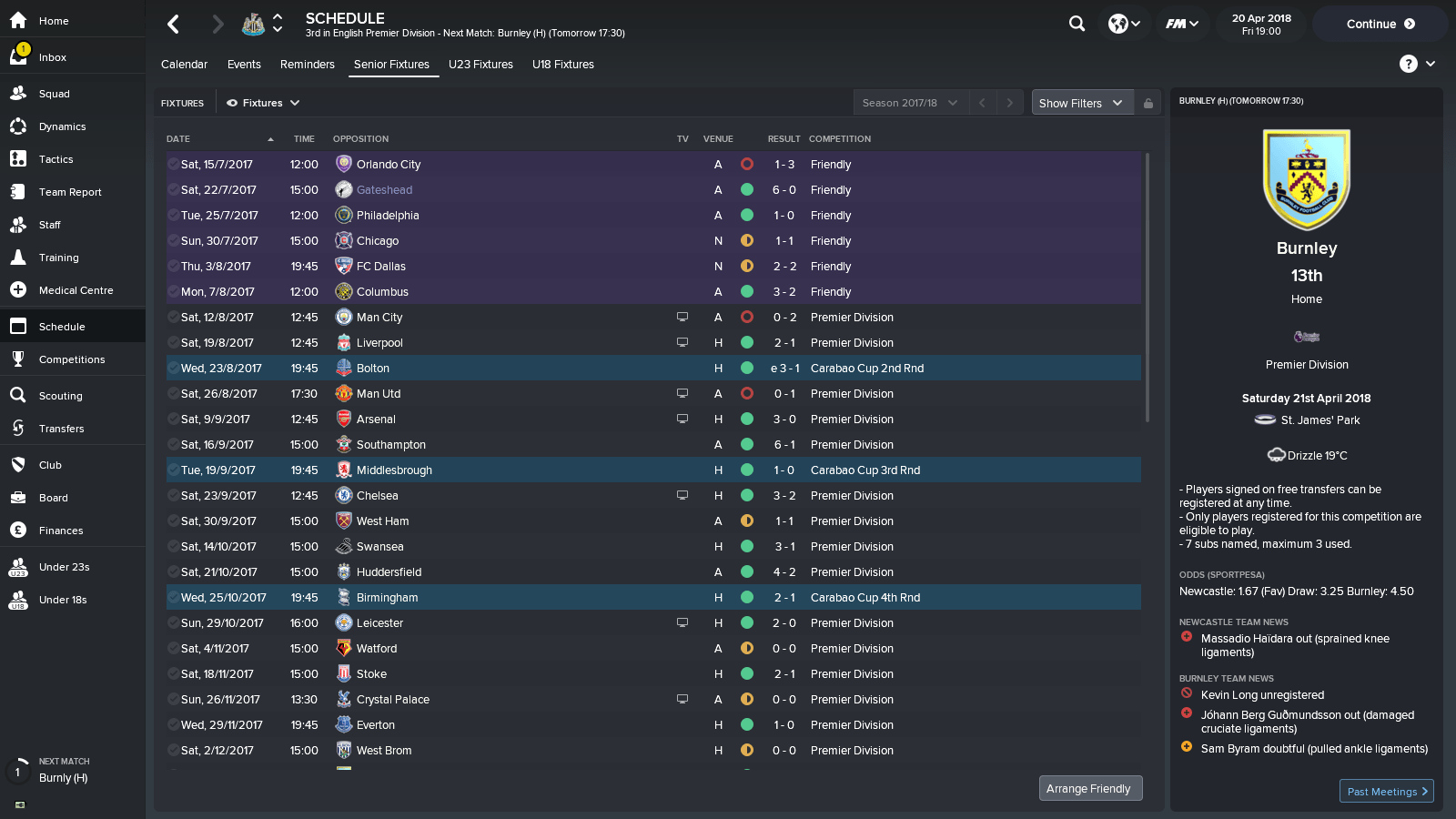
You can view most of the match details on our Facebook page.
The following part of this article portrays all about this tactic in details.
Tactic: The 4-2-3-1 Narrow Formation

This formation consist of 2 central defenders, 2 fullbacks, 2 central midfielders, 3 central attacking midfielders, and one striker. But each position has its own role.
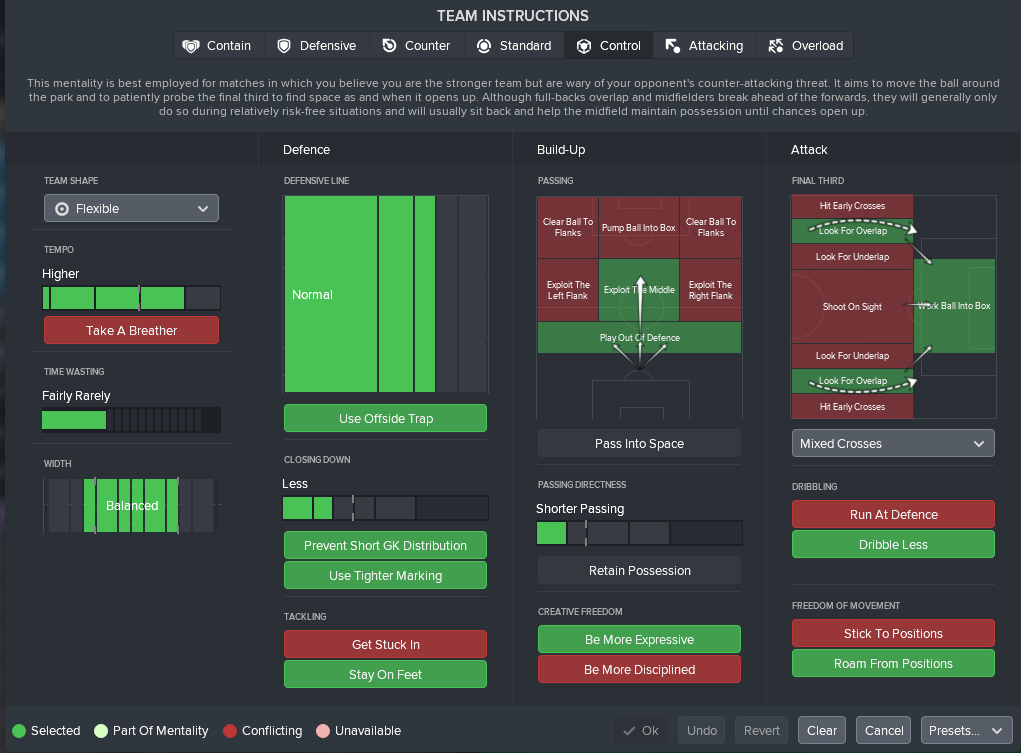
The team instructions made this tactic unique. From the team instructions window, the team shape is set to flexible with control mentality. Though, I usually usually use a standard mentality. The tempo is high and a balanced width is adopted.
From the Defence section, the defensive line is set to normal, using an offside trap. Closing down less is the best option for teams like Newcastle. This is because I don’t have high profile defenders and midfielders that can intimidate the opposition forwards while trying to win the ball back. But, you can choose close-down-more or much-more and see how it will work for you. By the way, there’s nothing wrong with experimenting.
Prevent-short-GK-distribution, use-tighter-marking, and stay-on-feet while tackling are all enabled.
Coming to the Build-Up section and considering the team’s midfield strength, I opted for explore-the-midfield. The passing directness is shorter passing, without retaining possession. This helps the team to make a quick attacking transition. However, the creative freedom is set to be more expressive.
The Attack section of this tactic kind of amazed me. Look-for-overlap worked better than look-for-underlap. I really don’t know why because I didn’t program my fullbacks to attack. I only wanted my attacking midfielders to make most of the runs while the fullbacks focus more on defending. Anyway, you can try look-for-underlap and see how it goes for your team. Moreover, the crossing is mixed, while dribble-less and roam-from-positions are activated.
Roles and Duties
Keeper: goalkeeper (Defend)
A sweeper keeper may be a great idea for your team. But I preferred using a goalkeeper for this tactic. It worked really well.
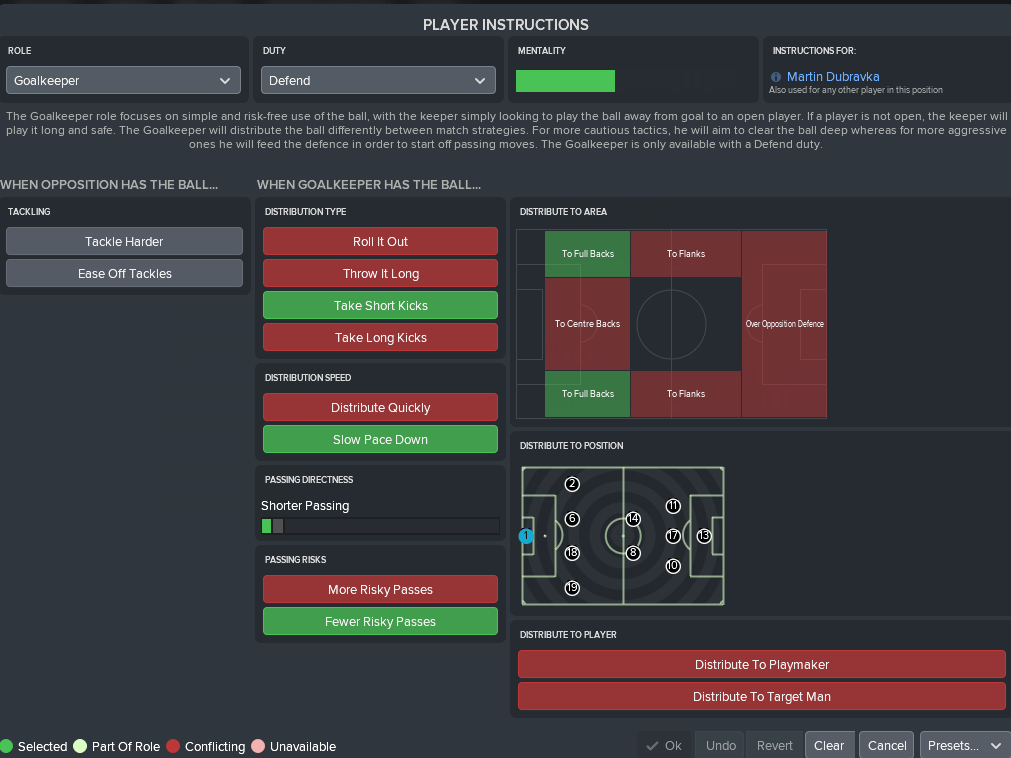
Central Defence: Two Central Defenders (Defend and Defend)
I found the Central Defender (CD) role most suiting because it does some of the jobs of a ball playing defender and a defensive centre back. The CD can stop the opposition forward from getting into the box. And can also try as much as possible to prevent one-on-one chances with the keeper. However, the assigned players will be inspired to lay off simple passes rather than carelessly giving the ball away.
With the defend duties, the players’ main priority is to mark the opposition forwards tightly. Marking is very important in this tactic.
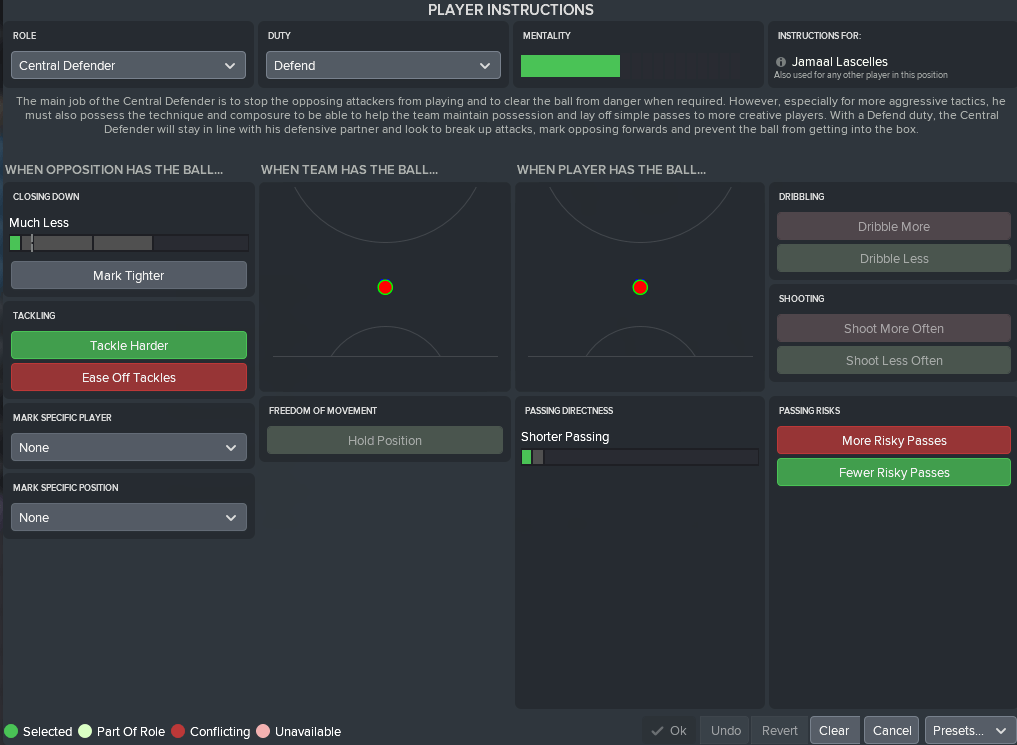
Apart from the CD role, this tactic could benefit from the Ball Playing Defender role. So if you have a very good BPD, install the role.
Side Backs: Two Fullbacks (both on Support)
Here in this tactic, the fullbacks stay in line with the centre-backs and help close down the opponent. When the team attack fails, the fullbacks will be available to recycle and support forward play. They can also offer intelligent crosses to the forwards, especially to the Target Man.
I was inspired about what this role did before in Mourinho’s tactic, so I decided to place it in this tactic. And it all worked fine.
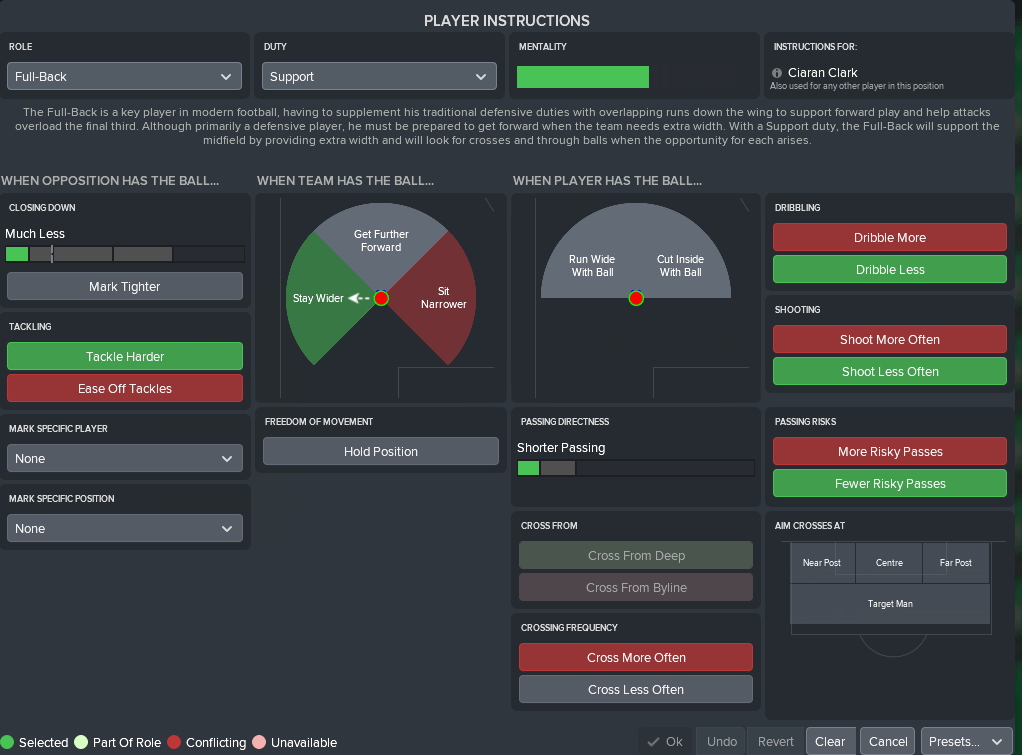
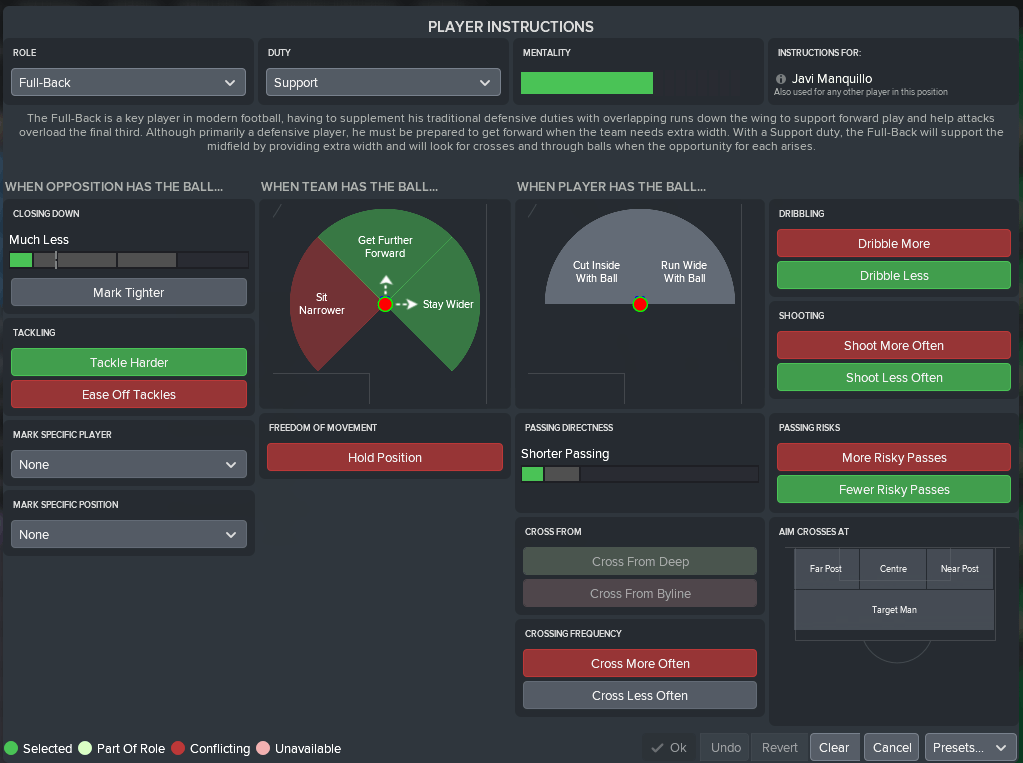
Central Midfield: Central Midfielder (Defend) and Deep Lying Playmaker (Defend)
The Central Midfielder (CM) acts like a pivot that supports all the roles. It’s an industrious role that attacks and defends through the central area of the pitch. With the defend duty, he rarely gets forward. But he can recycle forward play.
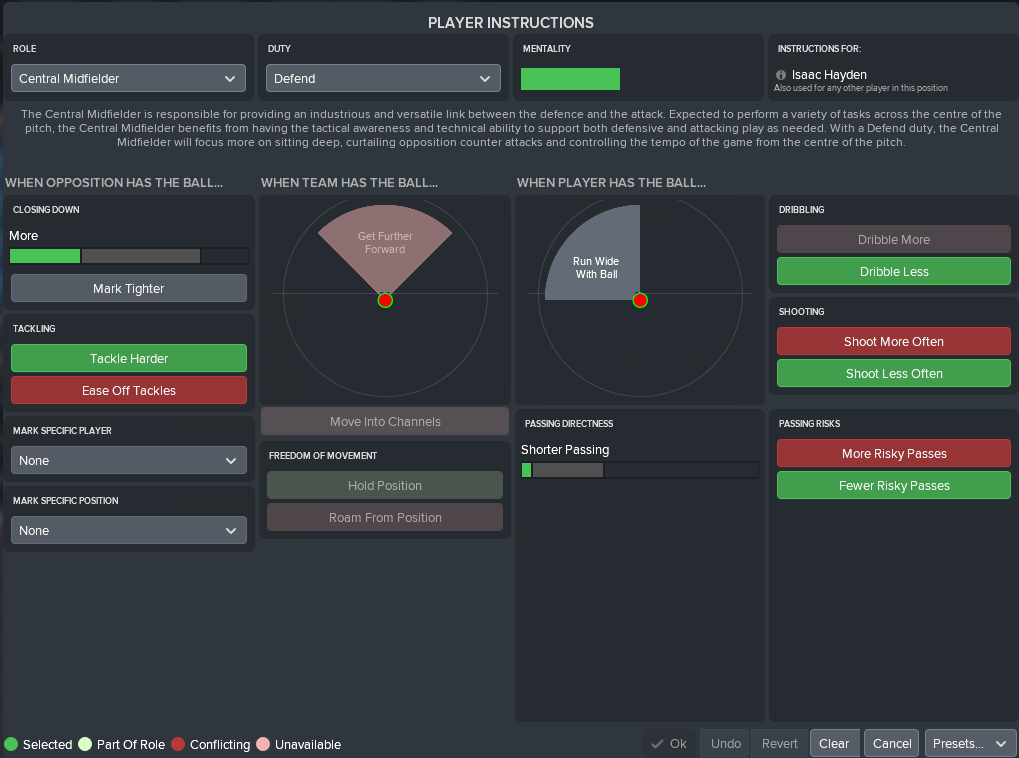
The Deep Lying Playmaker (DLP) operates in the space between the midfield and defence. The assigned player is like an all-round midfielder who can dominate the midfield. In this tactic, his main job is to improve the connection between the defenders and central attacking midfielders. He’s also the player that controls the team’s game.
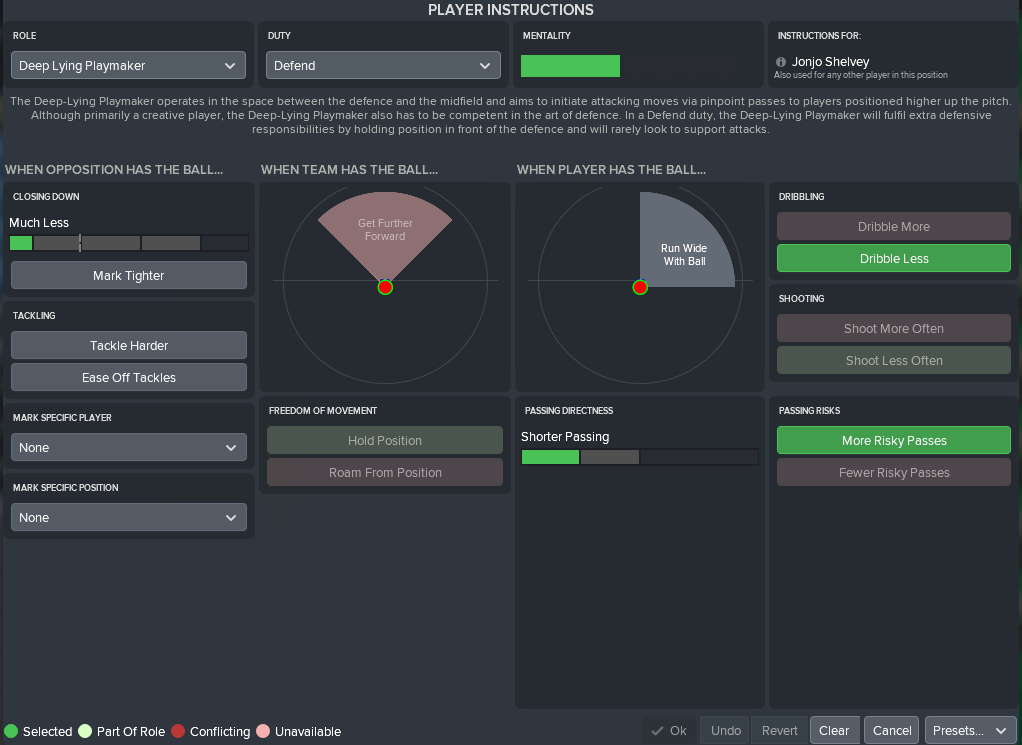
I placed both the CM and DPL with the defend duty because I needed them to prevent the opposition attacking midfielder or lone striker from initiating counter. If possible, prevent them from getting the ball. I needed them to sometimes act like defensive midfielders.
Central Attacking Midfield: Trequartista (Attack), Advanced Playmaker (Support), and Enganche (Attack)
A Trequartista can execute the work of an Advance Playmaker excellently and still act as a dangerous attacker behind the striker. The assigned player is always roaming around the advance midfield to find space. His movements can draw defenders away from good positions, allowing an attacking teammate to easily penetrate the box. Only a technical player can do justice to this role. And try to place a player with good off the ball attribute to this role.
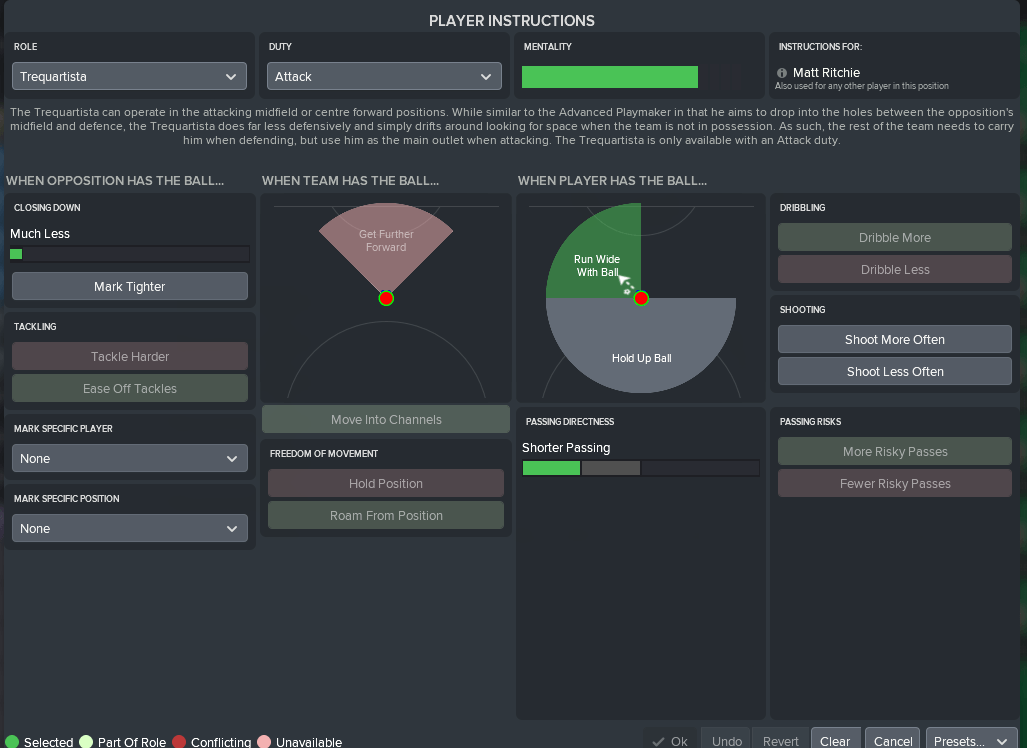
The Advance Playmaker role is a very creative and versatile role. The assigned player can operate anywhere around the pitch. But his main job here, behind the striker, is to drop killer balls for any attacking teammate. For support duty, the player’s dribbling, first touch, passing, vision, technique, anticipation, and decisions are vital.
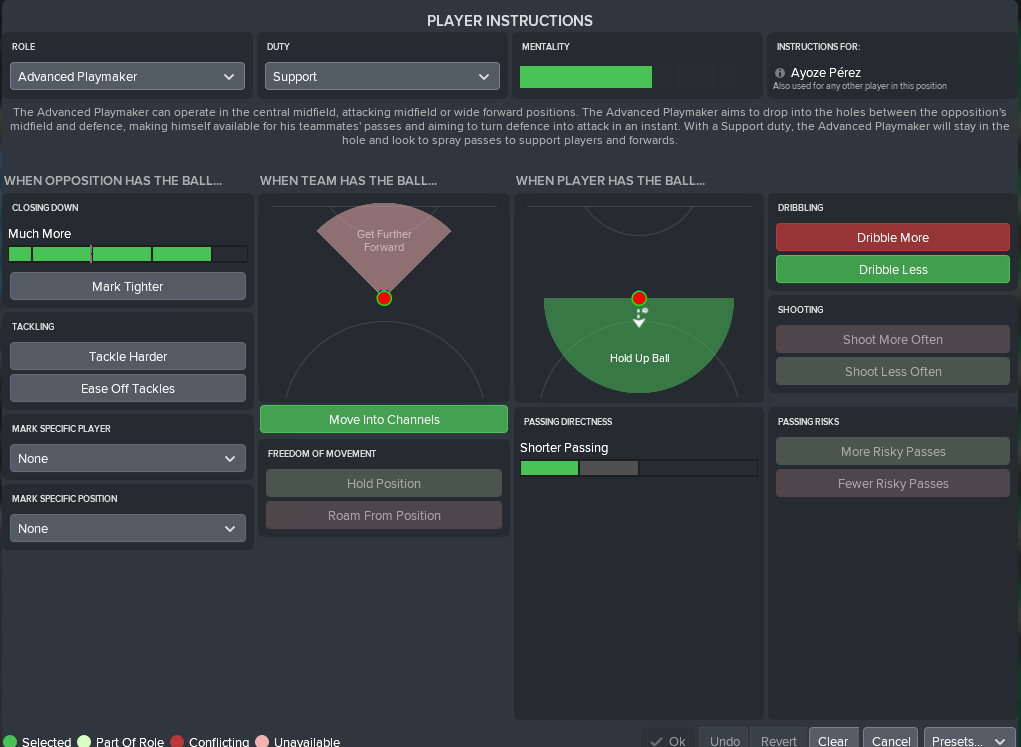
Finally, the Enganche is a prime creator operating mostly in the advanced central area. He’s like a pivoted playmaker to his team, as they work around him. He’s to make intelligent penetrating passes into the opposition box. The assigned player also has to have a good off the ball skill in order to be a good scorer. But his main job is to assist goals.
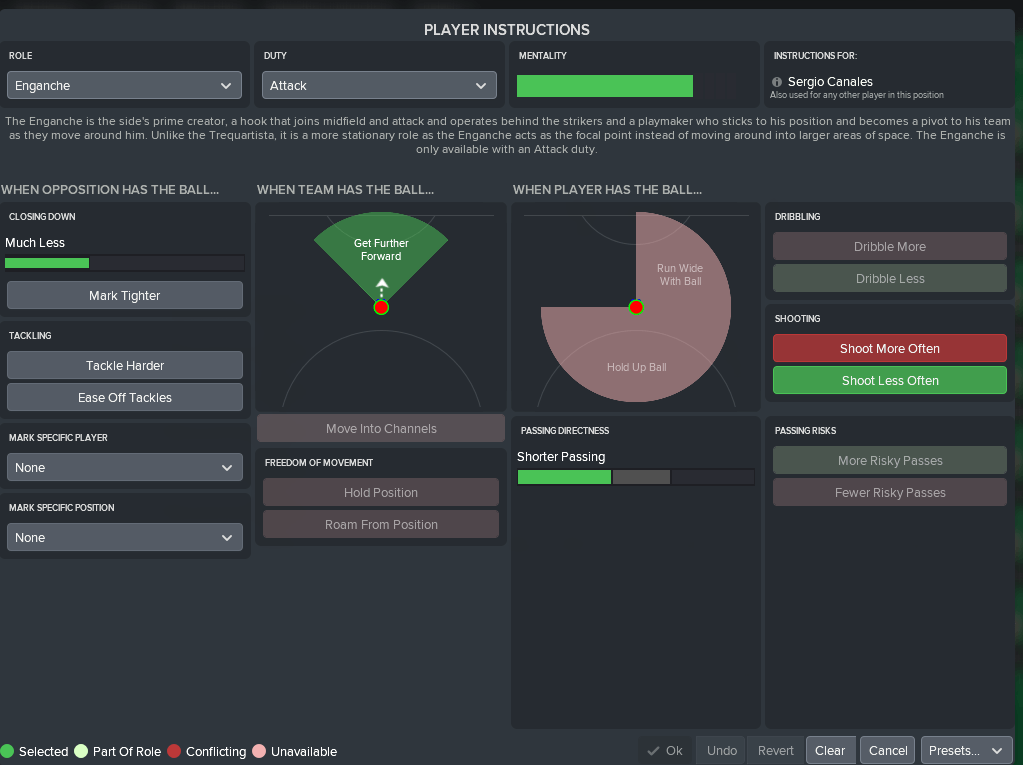
These three roles are the strength of this tactic. If they play badly, the team will suffer it. However, for preference reasons, you can rearrange these roles as you like. Maybe you prefer the enganche to stay in the middle; this may work well for your team.
Central Forward: Target Man (Attack)
A Target Man (TM) is a strong and technical player. He disrupts the defence with his physic, and technically creates chances for teammates. I couldn’t see any better role for the central forward position in this tactic. But an Advance Forward could work well; though I haven’t tried it. Luckily for us, we have Islam Slimani – a perfect target man. Moreover, you need someone that’s really good in air for this role.
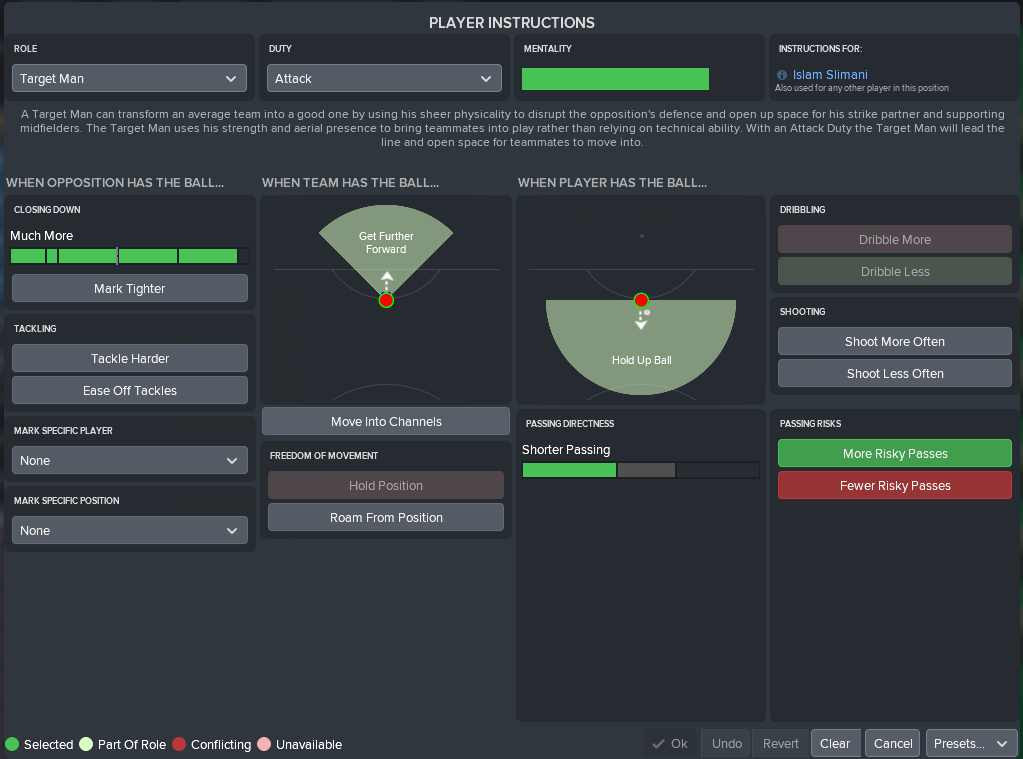
Specific Marking
This tactic needs specific marking in order to improve defence. While facing formations like 4-2-3-1 Wide (especially carrying attacking fullbacks), you have to instruct your AML to mark opposition DR. Then, the AMR marks DL. These markings help your fullbacks’ defence workload. Also, your DPL should be instructed to mark the opposition AMC.
For 4-1-2-3 Wide, ask you AML and AMR to do the same to the opposition side backs. Then, ask your DPL and CM to mark the two opposition central midfielders accordingly.
And for other formations carrying attacking fullbacks and wingbacks (like Conte’s 3-4-3), you have to specifically mark each one.
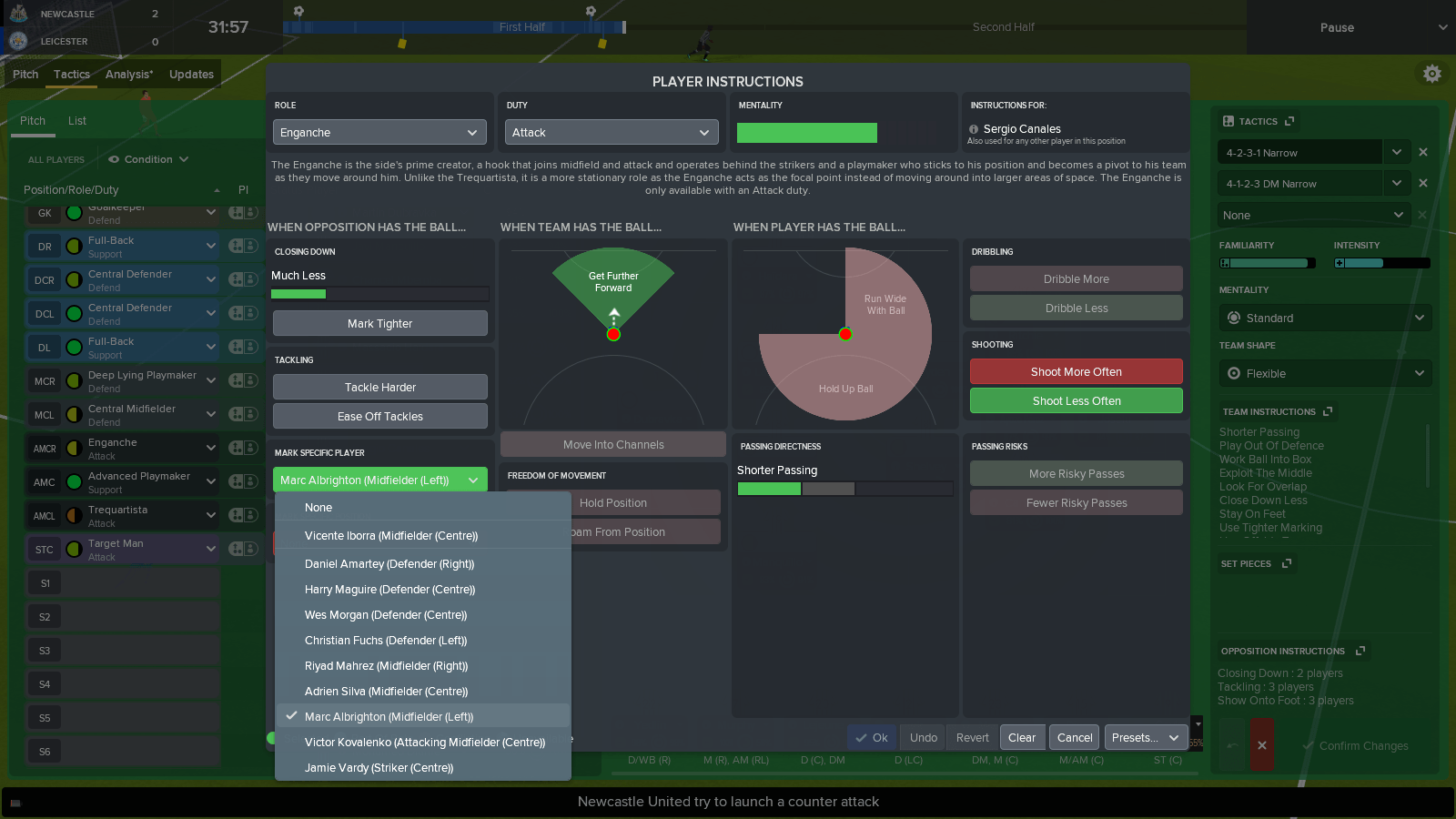
Training
Actually, I don’t mess around with the general training. I always leave that to my assistant manager while I handle the individual training. Therefore, it will help if you can individually instruct the three attacking midfielders to train on placing killer balls and trying one-twos. Also, your TM should be able to engage in one-twos.
Opposition Instructions
Opposition instructions are applied based on the opponent’s tactic. You can set it the way you feel it’s best or adhere to the advice of your tactical coach. But if you have no idea what to set, these screenshots below might help.
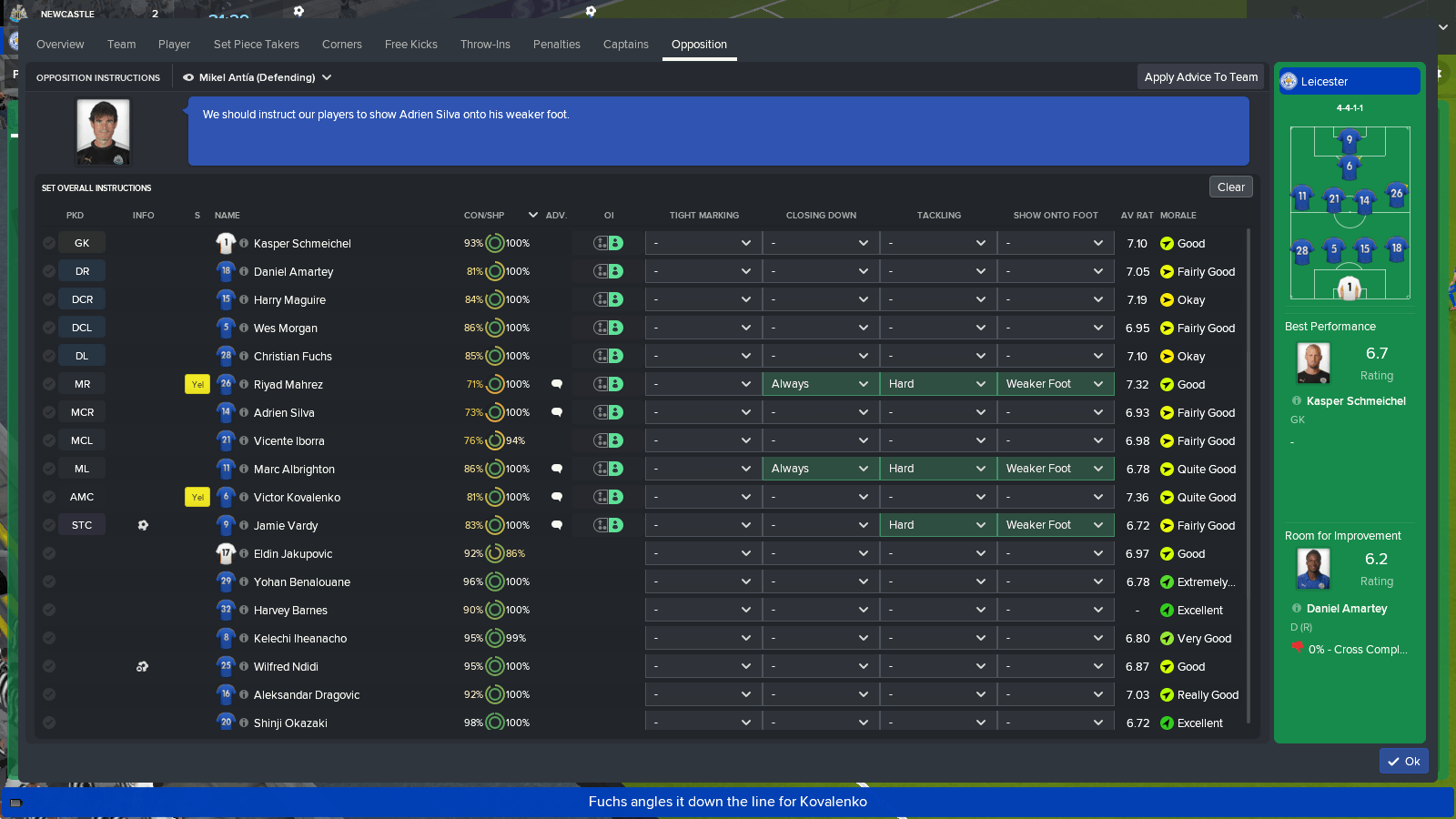
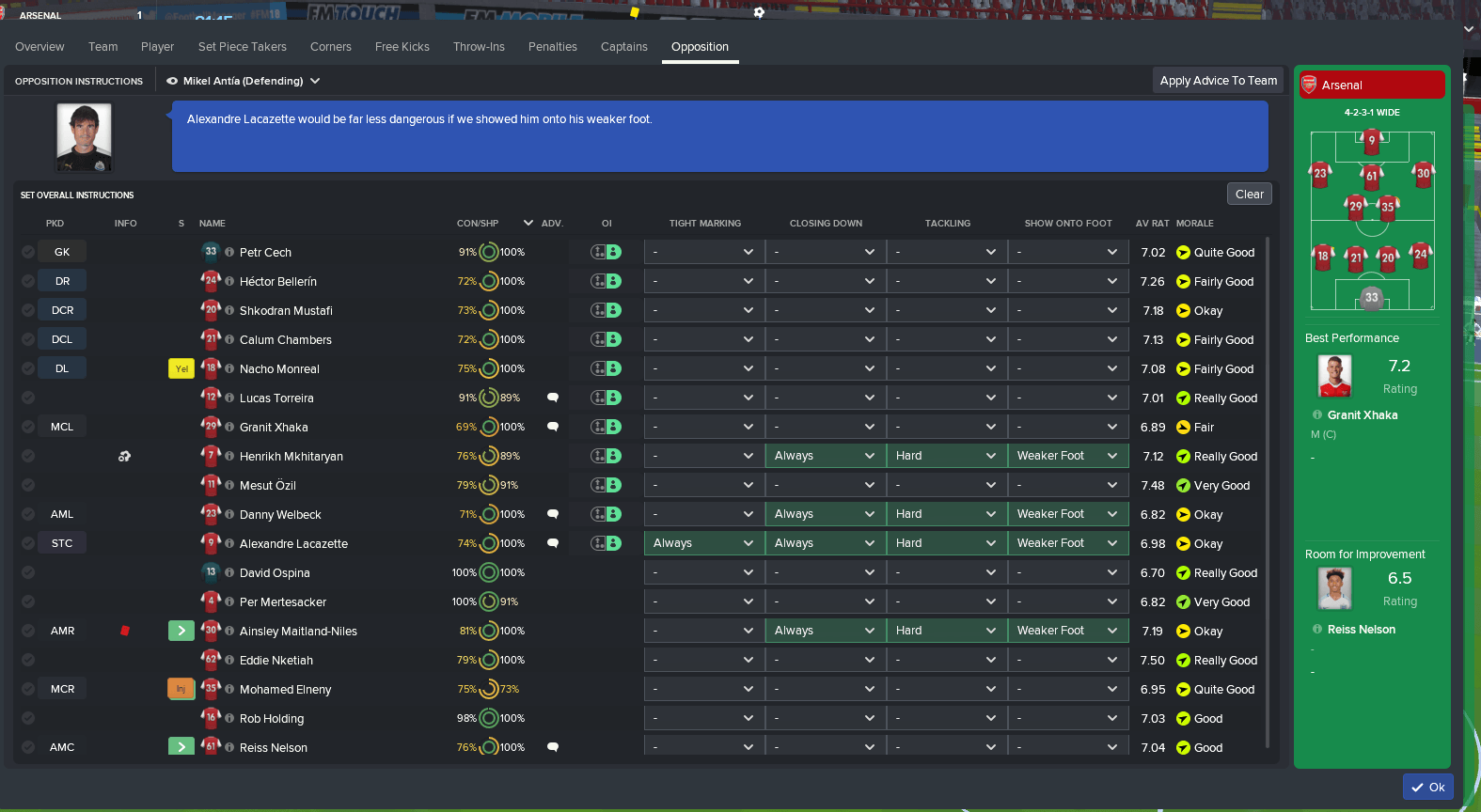
Results and Stats
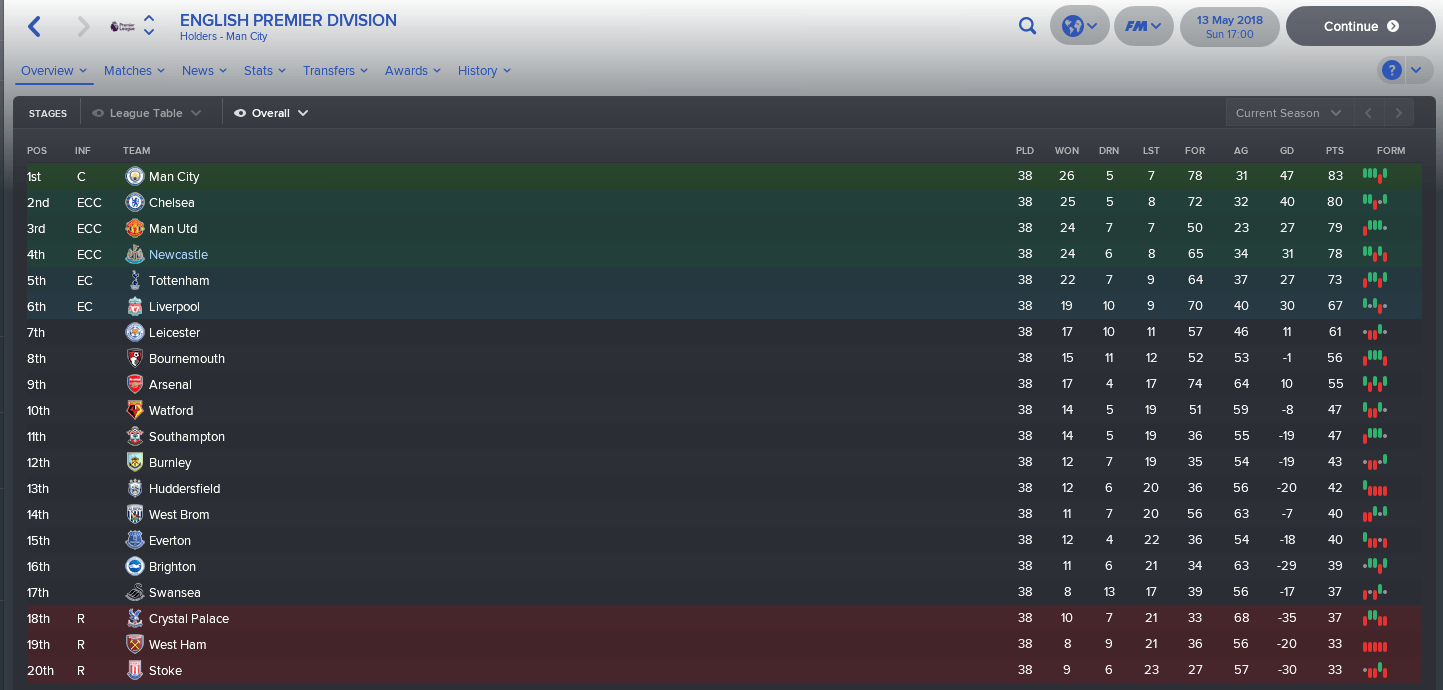
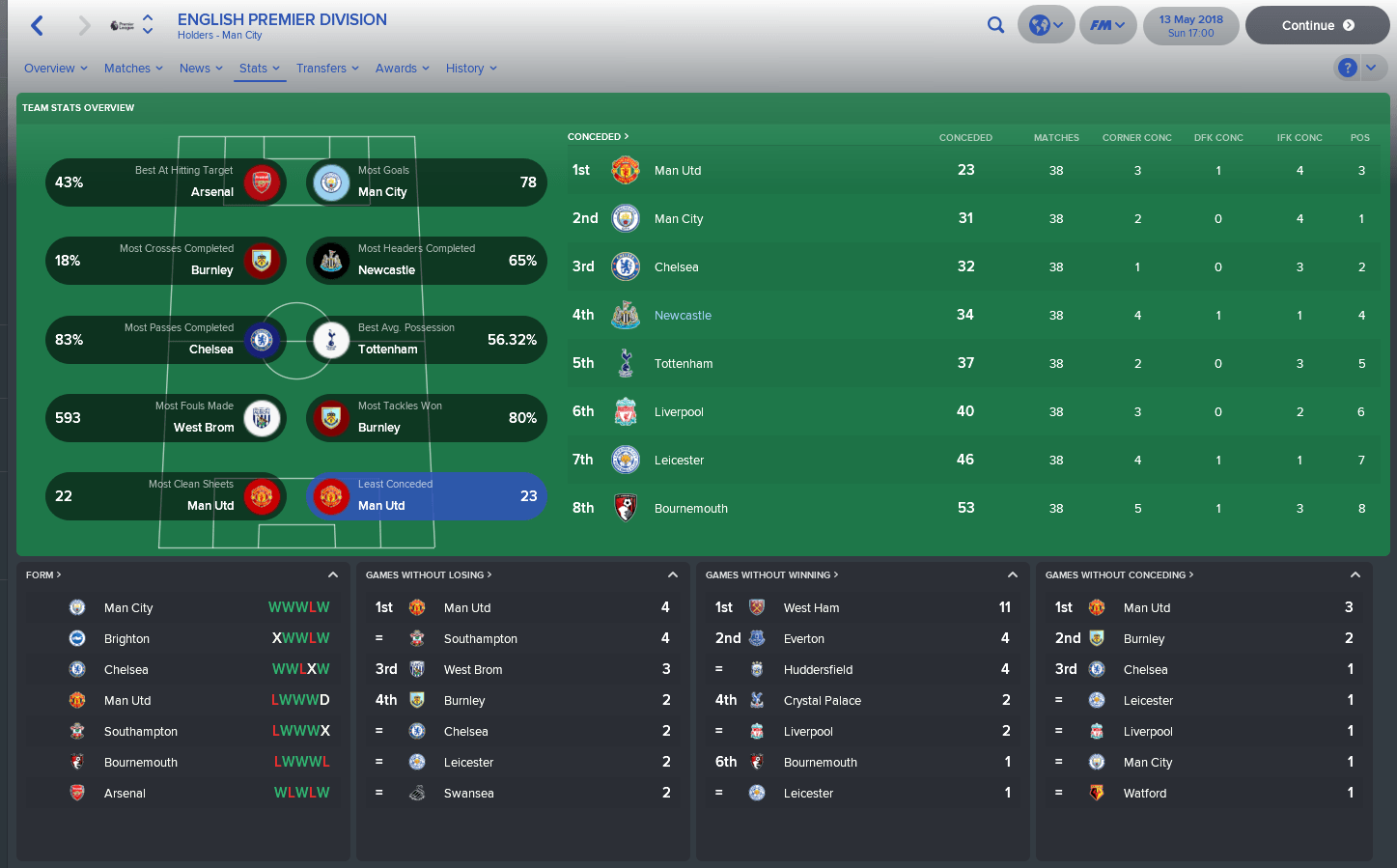
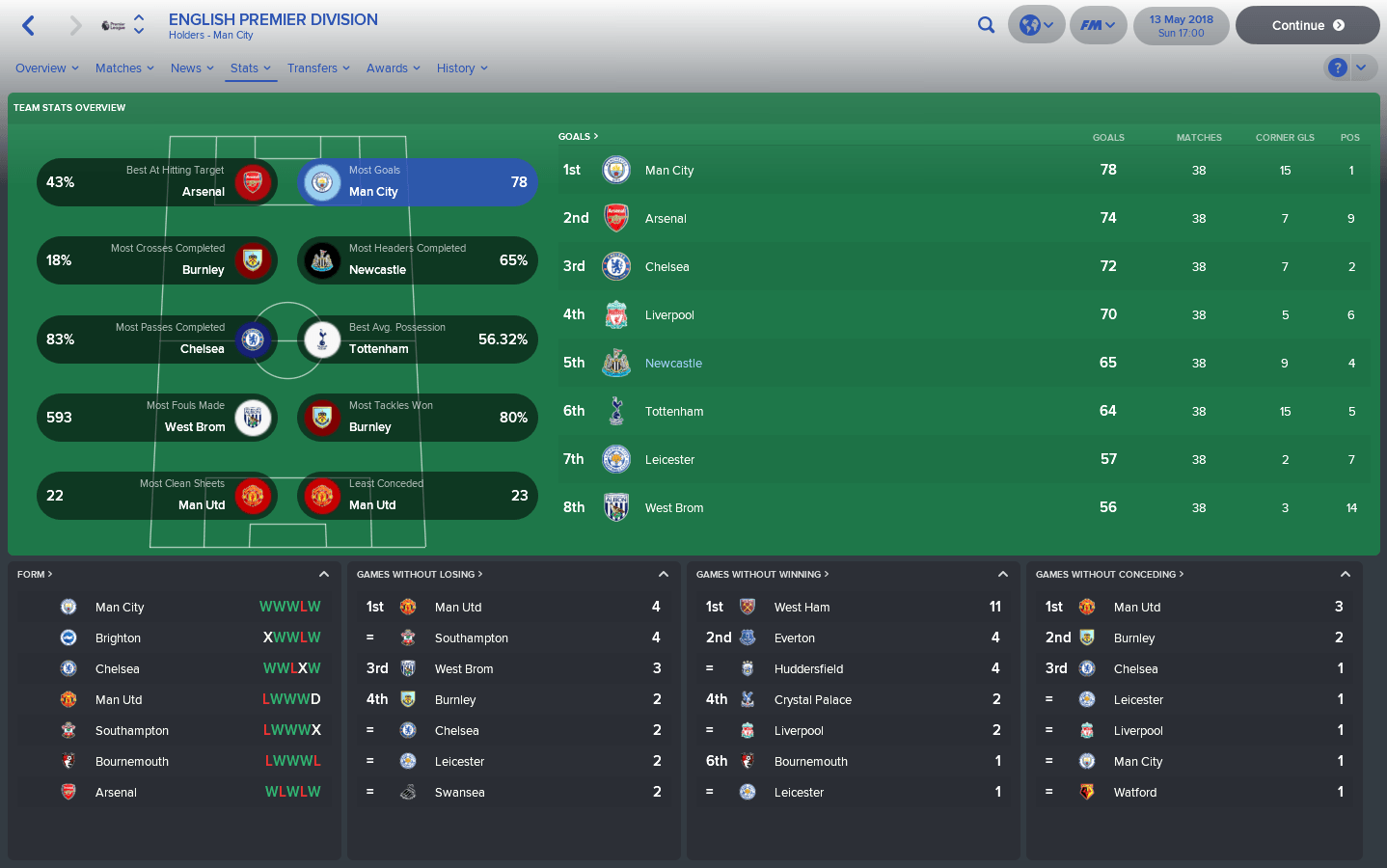
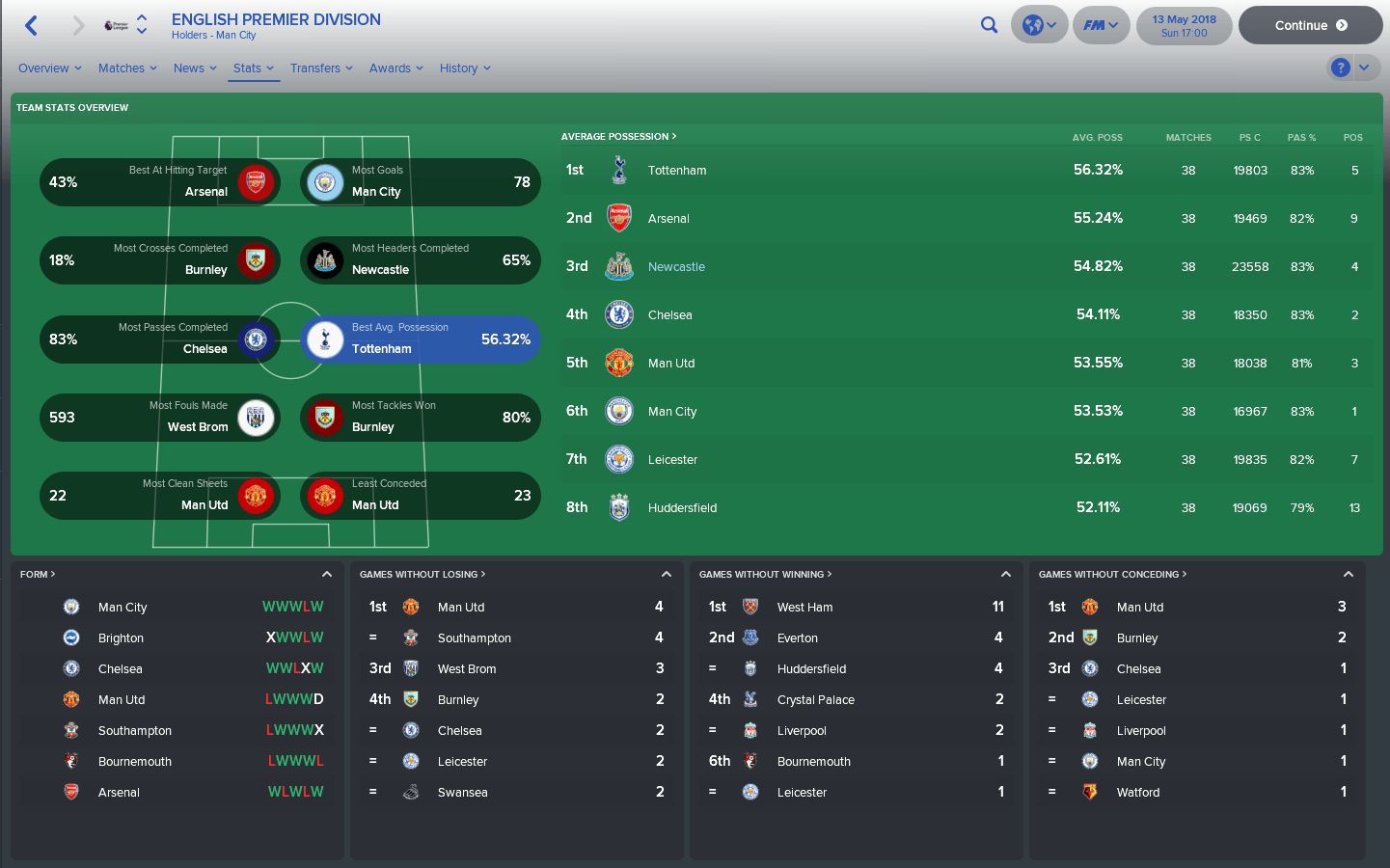
Analysis

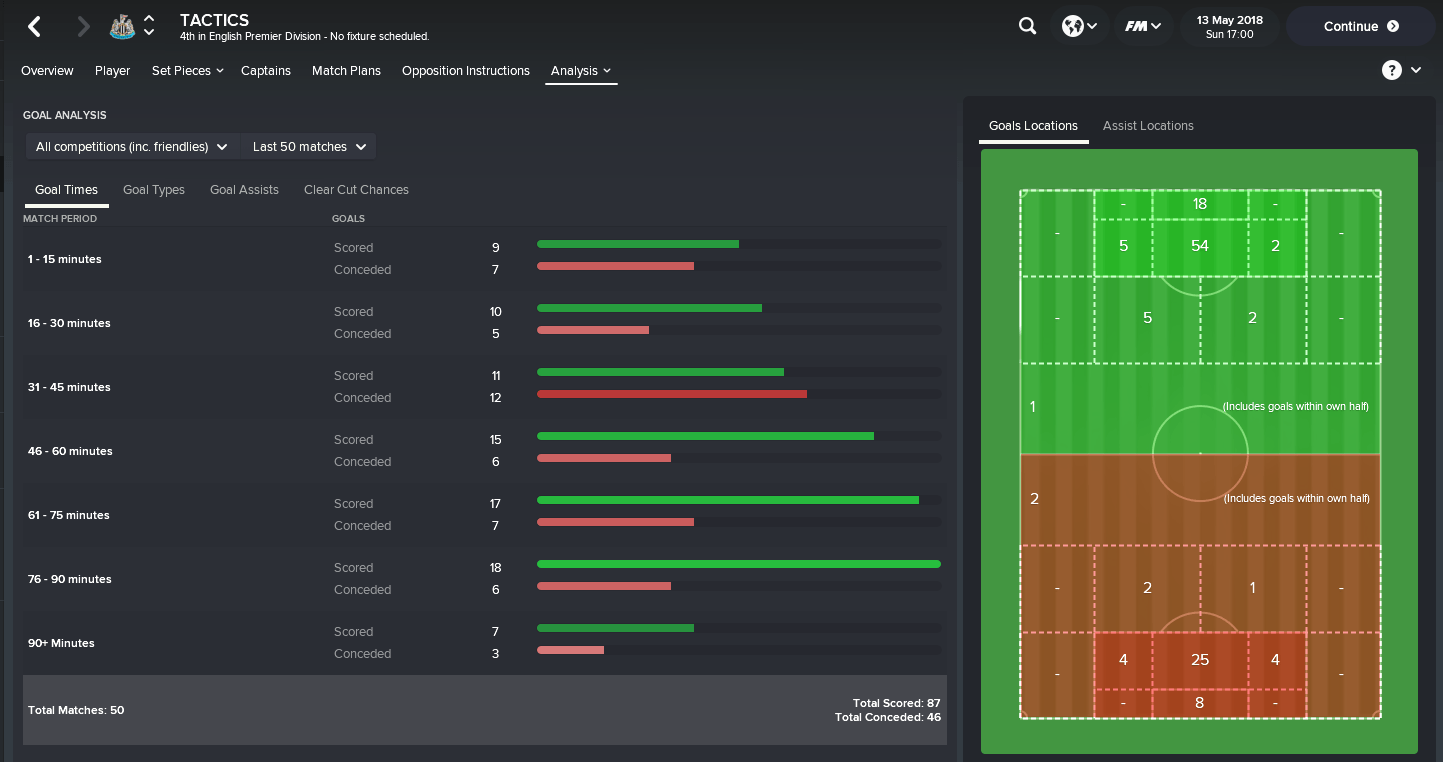
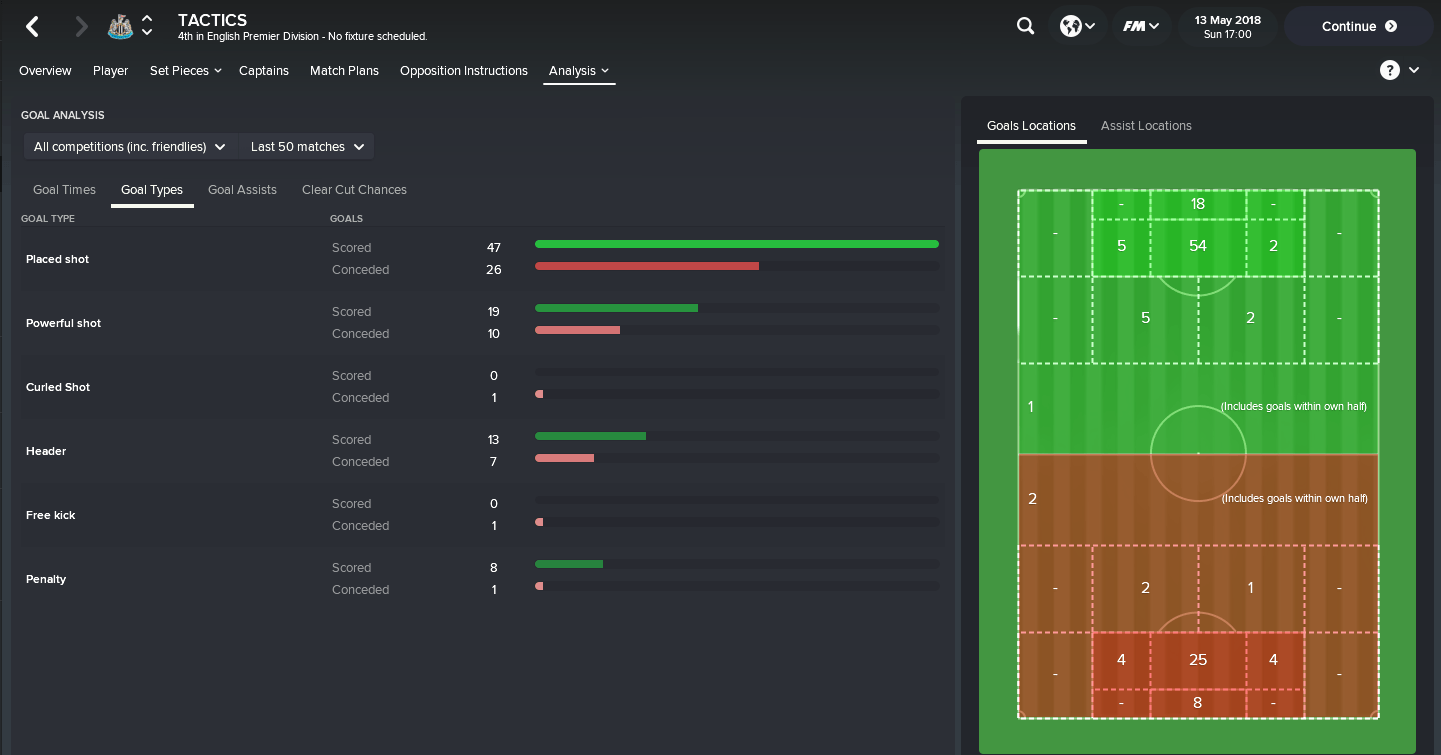
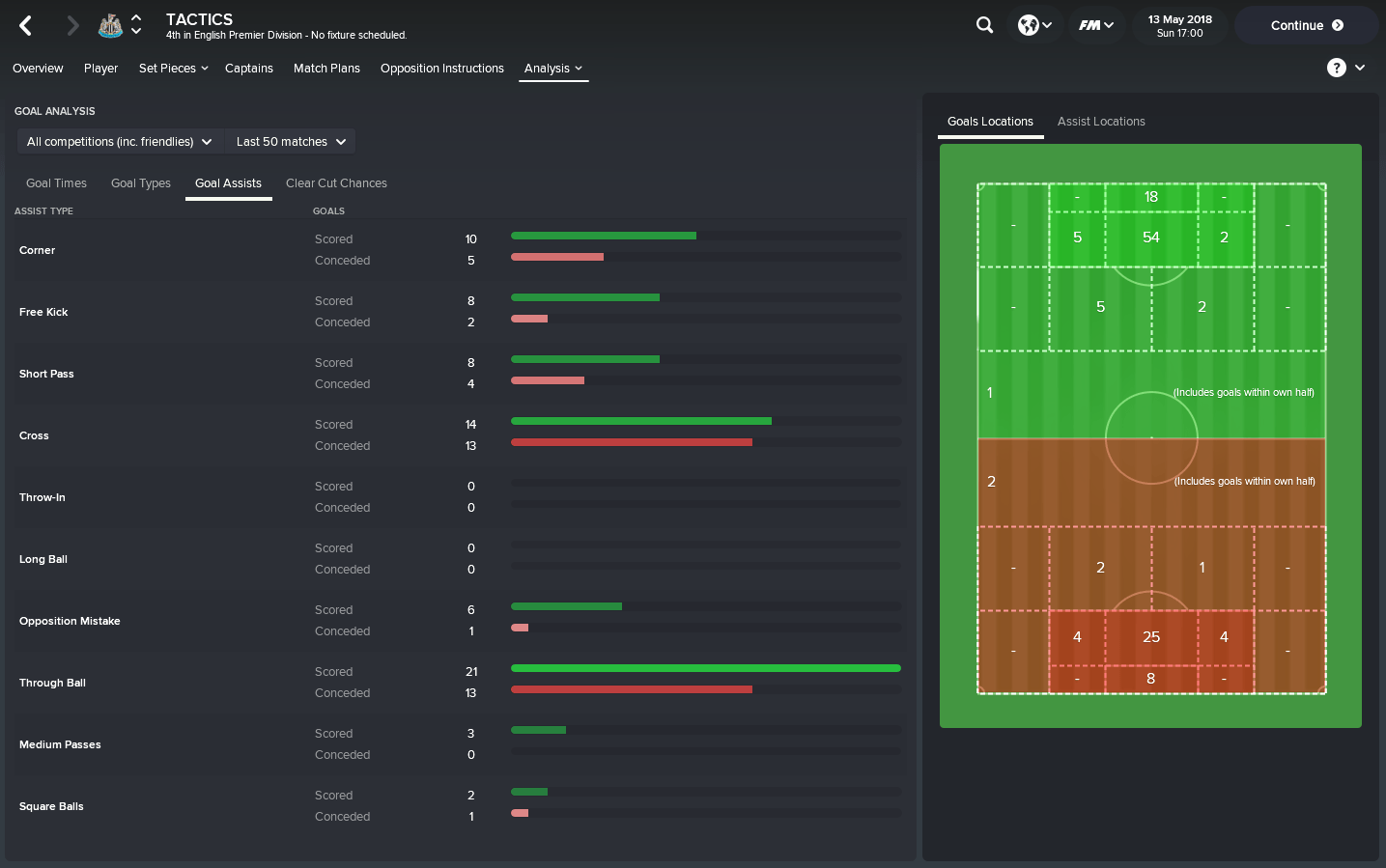
Download Tactic
[lockercat]Click Here[/lockercat]
You can check out this tactic created by our partner.



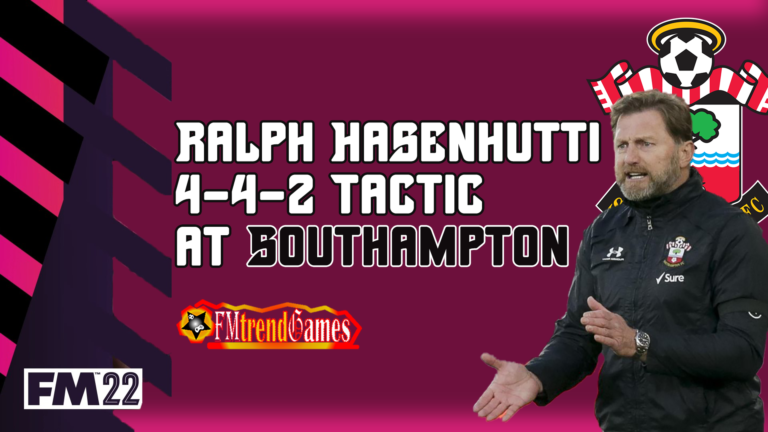

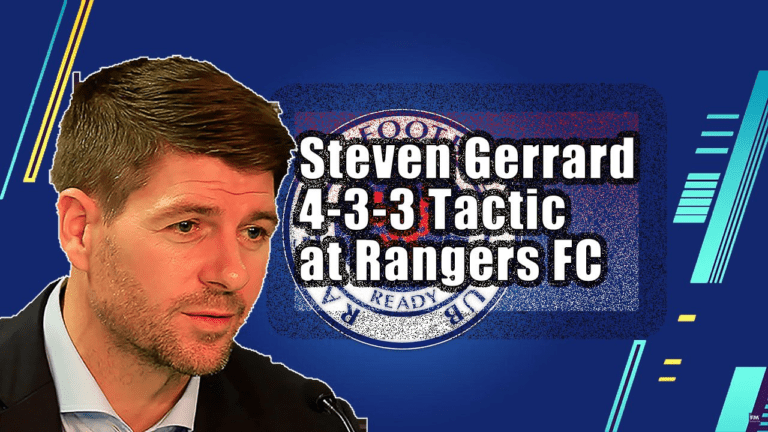


Can you tell me what is the best tactic for fm 18 using weak times?